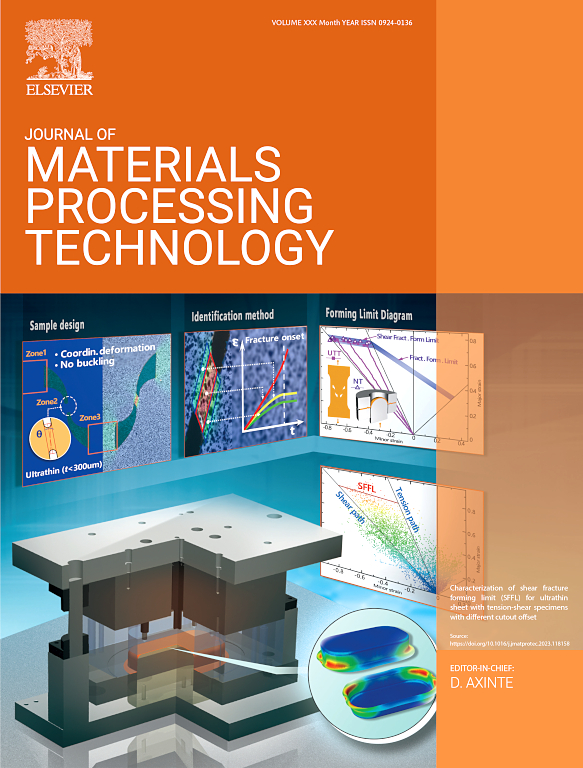A generic framework for tailoring microstructures and mechanical properties in extruded magnesium alloys via rotational strain porthole die extrusion: A case study on Mg-RE hollow profiles
IF 6.7
2区 材料科学
Q1 ENGINEERING, INDUSTRIAL
Journal of Materials Processing Technology
Pub Date : 2025-01-10
DOI:10.1016/j.jmatprotec.2025.118732
引用次数: 0
Abstract
Controlling microstructural evolution and texture to improve mechanical properties and weld seam integrity in Mg-RE hollow profiles is a generic challenge in materials processing. To address this, a novel Rotational Strain Porthole Die Extrusion (RSPDE) technique was developed, introducing circumferential shear strain during extrusion to refine texture and enhance dynamic recrystallization. Using Mg-8.8Gd-3.8Y-1.0Zn-0.7Mn hollow profiles as a case study, the RSPDE process achieved finer grains in the matrix zone, narrowed the precipitation-free zone in the welding seam, and reduced basal texture intensity compared to conventional porthole die extrusion (CPDE). Although the weld seam remained somewhat weaker due to larger grain sizes and absence of β' and γ' precipitates, subsequent aging treatments improved tensile strength. These improvements, however, came with reduced ductility due to precipitate-dislocation interactions. Despite this trade-off, RSPDE produced more homogeneous microstructures, weaker basal textures, and superior weld seam quality than CPDE. Fundamentally, this work establishes a transferable framework that links controlled shear deformation to predictable microstructural refinement and texture control, enabling more informed process optimization and alloy design strategies. This generic approach thus offers predictive guidelines for structural design and optimization across a broad range of high-strength magnesium alloys.
求助全文
约1分钟内获得全文
求助全文
来源期刊

Journal of Materials Processing Technology
工程技术-材料科学:综合
CiteScore
12.60
自引率
4.80%
发文量
403
审稿时长
29 days
期刊介绍:
The Journal of Materials Processing Technology covers the processing techniques used in manufacturing components from metals and other materials. The journal aims to publish full research papers of original, significant and rigorous work and so to contribute to increased production efficiency and improved component performance.
Areas of interest to the journal include:
• Casting, forming and machining
• Additive processing and joining technologies
• The evolution of material properties under the specific conditions met in manufacturing processes
• Surface engineering when it relates specifically to a manufacturing process
• Design and behavior of equipment and tools.
 求助内容:
求助内容: 应助结果提醒方式:
应助结果提醒方式:


